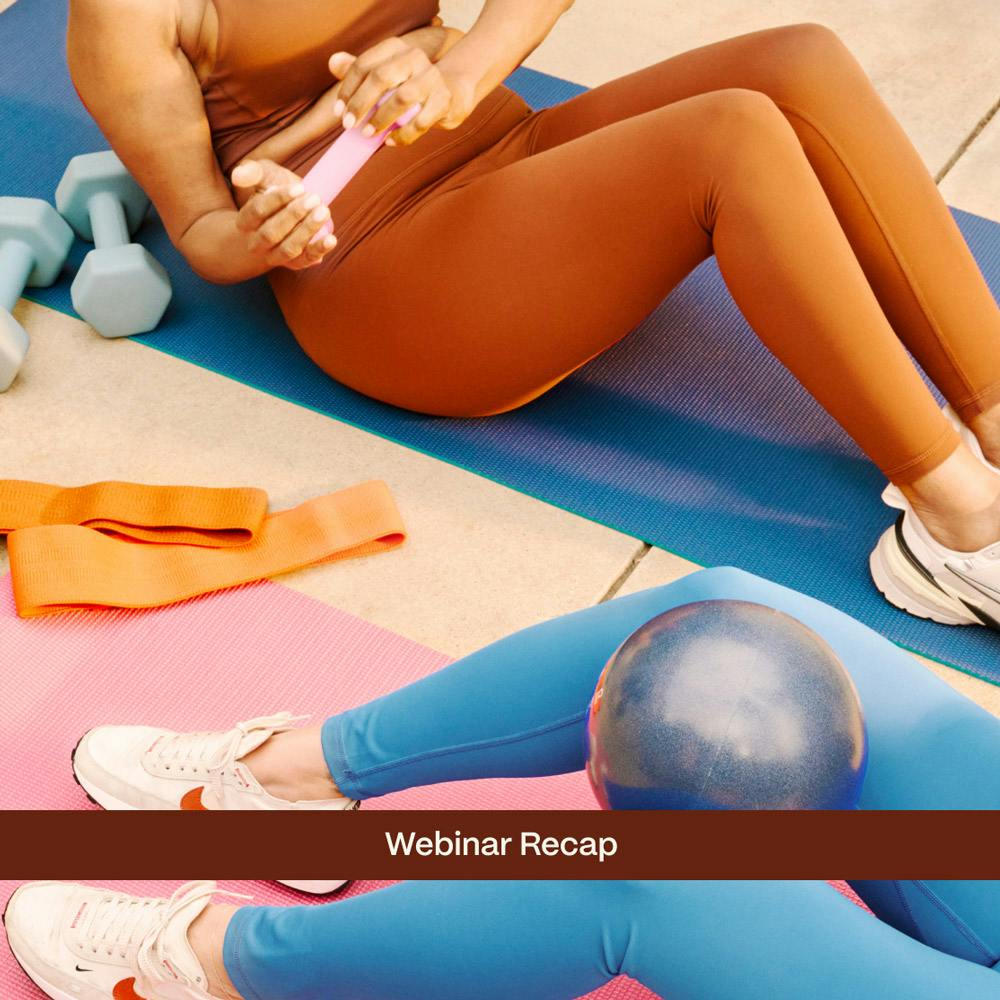Rachel Tavel, PT, DPT, CSCS is a Doctor of Physical Therapy, Certified Strength and Conditioning Specialist by the National Strength and Conditioning Association, and Wellen's Director of Content. In addition to her work at Wellen, she is a Forbes Health Advisory Board Member and a frequent contributor to Forbes, Women's Health, Men's Health, Runner's World, SELF and other publications. Prior to becoming a physical therapist, Rachel was a travel writer living and traveling throughout South America.
Bone health may not get the same attention as heart disease or breast cancer, but it should absolutely be on your radar. Fifty percent of women will break a bone due to osteoporosis—that’s higher than your risk of heart attack, stroke, and breast cancer combined. And fractures can be severely disabling, even life-threatening, especially as you get older.
If you weren’t already paying attention to your bone health, now’s the time to start, because during and after the menopause transition, women’s risk of osteoporosis and serious bone fractures jumps up. Here’s what’s going on: Throughout the first few decades of life, estrogen helps to maintain bone strength and density by promoting new bone formation. But after age 50, a decrease in estrogen levels—combined with normal wear and tear—can cause osteopenia, or lower than normal bone density. Without treatment, osteopenia may progress to full-on osteoporosis, a disease that causes bones to become weak, which makes fractures more likely.
Aside from simply being a woman over 50, a few other factors put you at higher risk for bone loss and osteoporosis. These include:
- Having a small body frame
- A family history of osteoporosis
- Lack of calcium and vitamin D in your diet
But every woman can take simple steps to safeguard her bones, no matter what her risk factors may be. A great first step is to book a virtual Midi visit. At Midi, we take care of your bone health from the first day. Our clinicians prescribe bone density testing when needed and then, depending on your results, offer evidence-based solutions to protect your bone health, including hormone replacement therapy (HRT). Recent research shows that if women start hormone replacement therapy within 10 years of their last period, not only do they enjoy significant relief from menopausal symptoms, but they also have a lower risk of bone loss. In addition to HRT, Midi clinicians also provide non-hormone treatments like prescription meds, supplements, and lifestyle coaching.
Another good place to focus: Your exercise routine. By adding in bone-building workouts—and subtracting moves that could increase the risk of fractures—you can help prevent, and actually reverse, bone loss.
To get you started, Midi teamed up with the pros at Wellen, an online exercise program built for osteopenia and osteoporosis. Here, Wellen’s Rachel Tavel, PT, a doctor of physical therapy and certified strength and conditioning specialist, answers top questions about exercise and bone health at midlife.
1. How do I know if I have low bone density?
Unlike hard-to-miss menopause symptoms (see: hot flashes), low bone density typically goes unnoticed. In fact, osteoporosis is known as a “silent disease” due to its lack of obvious symptoms. While there are some subtle signs (loss of height, a more hunched posture, lower back pain), it can be hard to distinguish these from the gradual aging process. That’s why, for some women, a fracture may be the first indication of weakened bones.
The best way to determine if you have low bone density is to have a bone density scan (DEXA scan), a noninvasive X-ray test that looks at the hips and spine. Guidelines recommend screening for women 65 years and older and for postmenopausal women younger than 65 who have one or more risk factors for osteoporosis.
The results of a bone density test are called a T score. The lower the T score, the greater your fracture risk.
- Normal bone density: People with normal bone density have a T score of -1.0 or above.
- Low bone density (osteopenia): People with low bone density, or osteopenia, have a T score between -1.0 and -2.5
- Osteoporosis: People with osteoporosis have a T score of -2.5 or below
Based on your T score, your doctor can advise you on the best steps to take for your bone health.
2. What exercises are best for safeguarding or improving bone health?
The research is clear: The best exercises you can do to build or maintain strong bones include weight-bearing, resistance, posture, and balance exercises.
- Weight-bearing exercises, such as walking, dancing, and doing squats and planks, require you to support your body against gravity. This puts healthy stress on the skeleton, which slows bone mineral loss and encourages bone-forming cells to get to work.
- Resistance exercises are strength training exercises that use weights, bands, or other forms of resistance. As your muscles get stronger, they put added stress on bones, which in turn strengthens the bone too.
- Posture exercises can teach proper alignment and body movement, helping to take extra stress off the bones and joints.
- Balance exercises help prevent falls, which can reduce your risk of life-altering fractures. People with low bone density are more prone to fractures, so focusing on balance is important.
3. How often should I exercise to maintain or improve my bone health?
To build bone, consistency is key. The Bone Health and Osteoporosis Foundation suggests doing weight-bearing exercises for 30 minutes a day most days of the week and muscle-strengthening exercises two to three days per week. If you’re new to exercise, talk to your doctor or physical therapist about the best way to kick off a workout routine.
If this feels daunting, know that you don’t need to do it all at once. To make the goal more doable, try breaking your workouts up into smaller sessions. You could, say, sneak in a few minutes of weight-bearing exercise by going up and down the stairs a few times or taking the dog for a stroll around the block. Or, to make a dent in your strength-training, fit in a few bicep curls and overhead presses while chatting with a friend.
4. Should I avoid certain exercises if I’ve been diagnosed with osteopenia or osteoporosis?
Most types of weight-bearing exercise are good for the bones, but avoid any moves that require bending forward at the waist (like touching your toes or crunches) or twisting forcefully at the waist (such as during tennis or golf). These put increased pressure on portions of the vertebrae, upping the risk of spinal compression fractures. If you’re ever unsure if a certain movement is safe, ask your doctor or a physical therapist for guidance.
Pilates and yoga, while generally fine for people with low bone density, may also require twisting and bending. If you participate in these exercises, make sure your instructor is aware of your osteopenia or osteoporosis and knows how to modify certain moves.
5. How can I tell if my workouts are improving my bone health?
It’s not easy to track progress that’s occurring on a microscopic level, and it often takes at least 18 months to see an improvement in a DEXA score. But while you may not be able to see the changes happening in your bones, know that each and every workout and move is paying off.
Meanwhile, focus on the amount of weight you’re using, how many reps you can do, or how challenging an exercise feels as tangible measures of how far you’ve come. Over time, you’ll know you’re improving if the challenging exercises start feeling easier, your posture and balance improves, and you can lift heavier weights or use higher amounts of resistance. Every improvement should motivate you to stick with your bone-healthy routine.
6. I haven’t exercised in a while. Is it too late to start working out to improve my bone health?
It’s never too late to start exercising for bone health. But if you’re a newbie, you’ll want to get the green light from your doctor first and take it slow and easy. If you’re not sure what weights, workouts or intensity levels are safe or appropriate to start with, see a physical therapist or personal trainer. And be sure to take days off to give your body time to rest and recover.
7. What is one thing that every woman should know about exercise and bone health?
Bone health typically doesn’t make it to the top of our priority lists, but it should! Avoiding fractures due to weakened bones can ensure mobility, independence, and strength now, and for decades to come. So make positive changes in your exercise routine and find a program you can stick with throughout a long, active life. To learn more about how Wellen can match you with a personalized fitness program that helps fight osteoporosis and osteopenia, go to getwellen.com.
If you’re in perimenopause or menopause and want guidance from clinicians who specialize in women’s midlife health, book a virtual visit with Midi today.
Hormonal change is at the root of dozens of symptoms women experience in the years before and after their period stops.
Our trained menopause specialists can help you connect the dots to guide you towards safe, effective solutions.
Whether you need personalized guidance or a prescription routine to tackle symptoms—including brain fog, hot flashes, sleep trouble, mood swings, and weight gain—we’ve got you covered. Learn more here.
Midi’s mission is to revolutionize healthcare for women at midlife, wherever they live and whatever their health story. We believe that starts with education, to help all of us understand our always-changing bodies and health needs. Our core values guide everything we do, including standards that ensure the quality and trustworthiness of our content and editorial processes. We’re committed to providing information that is up-to-date, accurate, and relies on evidence-based research and peer-reviewed journals. For more details on our editorial process, see here.
 Rachel Tavel, PT
Rachel Tavel, PT



